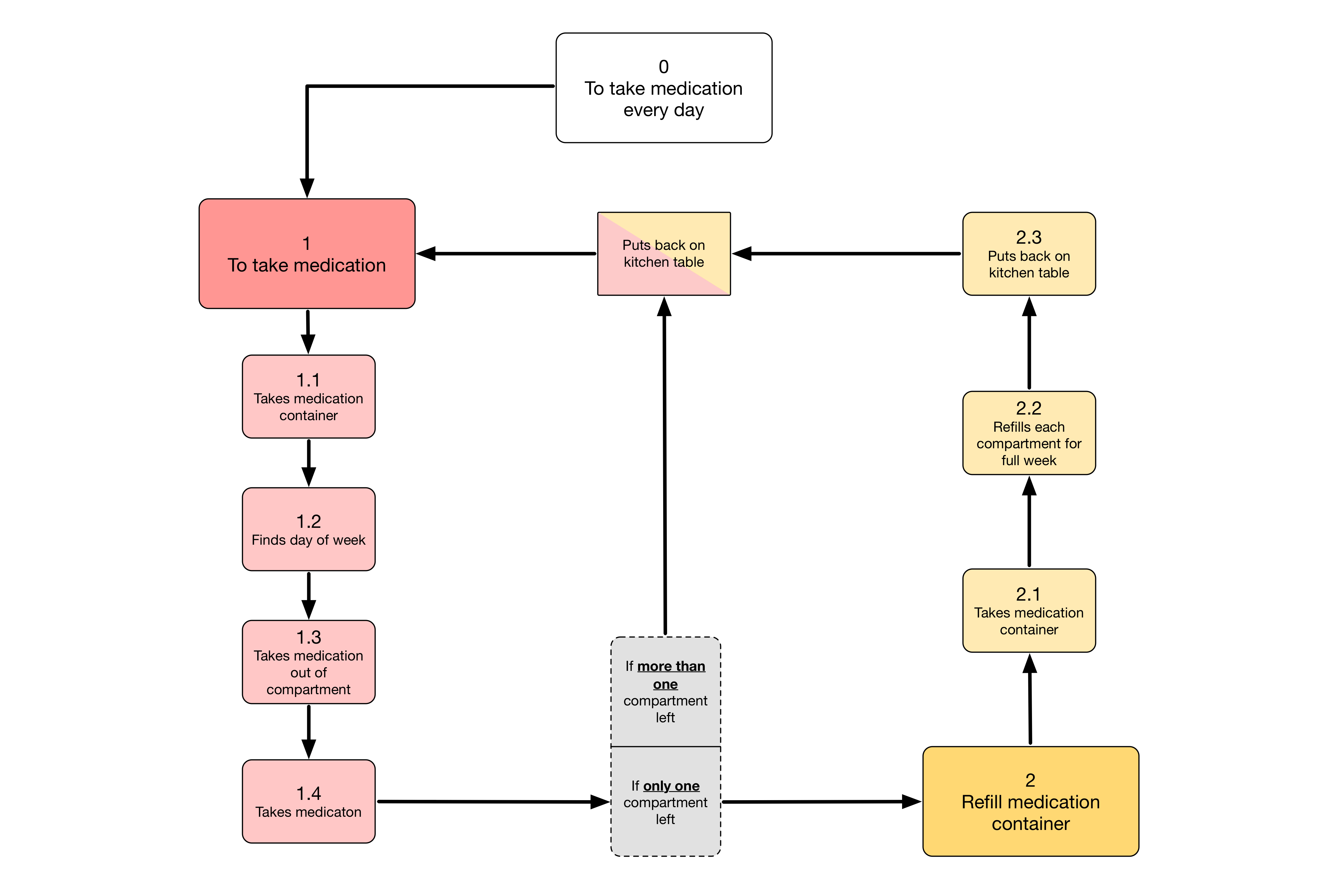What is Hierarchical Task Analysis ( HTA) ?
Hierarchical Task Analysis is a type of task analysis which involves collecting information using data collection technique ( eg. interviews, observations) and then analysing it. It focuses on the observable behaviour of users.
How to create Hierarchical Task Analysis ( HTA) ?
- Identify users’ primary goals and identify main tasks of concern.
- Design and conduct data collection to elicit information about: the goals that users are trying to achieve.
- Analyse the data to create specific task models.
- Generalise across the specific task models to create a generic task model.
- Check models with users, other stakeholders and iterate.
Tips
- HTA model should be based in real data to capture different people doing tasks.
Examples of Hierarchical Task Analysis ( By Robert, Lilly and Lily)
Built during one of Interaction Design tutorials
HTA ( MRS OWEN)
Mrs Owen keeps the four medicines she takes every morning in their original bottles on top of the bread bin in the kitchen. Every evening she moves these bottles to the coffee table in her sitting room so that she will not forget to take them the following morning. After breakfast, she places them back on top of the bread bin.
HTA ( MRS POOLE)
Mrs Poole puts all of the tablets she needs each day in a plastic container with compartments for each day of the week. When there is only one full compartment left, she refills the entire week. She keeps this medicine container on her kitchen table so that she will not forget to take her tablets. She also finds this container very handy when she goes on holiday.
Source: “Excerpts from the management of Long-Term Medication by Older People”, Bill Bytheway, Julia Johnson, Tom Heller and Rosemary Muston


